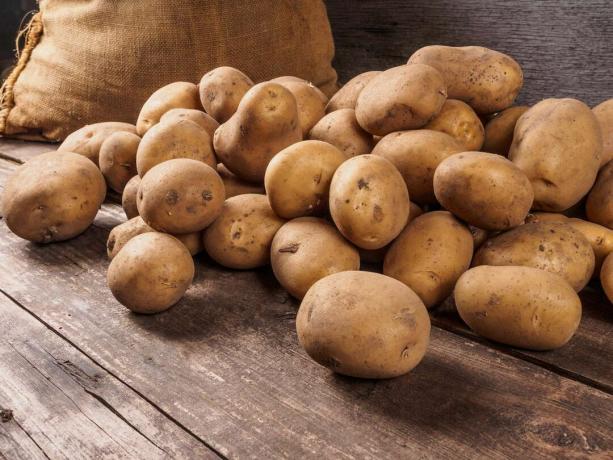The Linda variety is one of the most popular potatoes: you can find out everything you need to know about cultivation, harvesting, storage and the taste of this potato here.

In Germany the potato has been of great importance for a long time. Nevertheless, the popular potato variety Linda was almost threatened with extinction in 2004: The breeder responsible for the variety did not want to register Linda again with the Federal Plant Variety Office. That would actually have meant Linda's downfall, since unregistered varieties are no longer allowed to be cultivated. However, resistance quickly formed and the circle of friends “Rettet die Linda”, which was founded especially for this purpose, ensured that after a long back and forth, a new approval was applied for. In addition, a special form of approval was chosen, which means that the former breeding company can no longer influence the approval process. Because the current approval of the Linda variety will expire in 2020, which is why it will have to be registered again with the Federal Office for Cities. Incidentally, the Linda variety was voted "Potato of the Year" in 2007 - on the one hand because of the excellent taste, but certainly also because of the media attention.
Variety Linda: cultivation, harvesting and storage
Linda is a medium-early ware potato with an intense yellow flesh colour. The bright yellow color is enough to make the mouths of most “Linda friends” water. There are no special features to consider when growing the Linda variety. In contrast to other potatoes, the variety is said to grow very reliably on sandy soils. If the weather is kind enough, you can expect numerous, medium-sized potatoes 130 to 150 days after planting.
If the Linda potatoes are harvested at the right time, the tubers can be stored until the end of May. Pay attention to the storage of potatoes that they are as cool as possible but frost-free and dark while waiting for the cooking pot. With the Linda variety, however, you must also be aware that the potatoes, which are actually waxy, can become floury over time. For lovers of Linda potatoes, however, this does not seem to be a reason to look for an alternative. Although the share of the Linda variety (measured in terms of total potato production in Germany) is small, the variety has a firm place in the direct marketing of organic potatoes. If you want to buy seed potatoes for your own garden, they are usually offered in organic quality. You definitely can't go wrong with the choice of the well-tried variety Linda!

Potato variety Linda in the kitchen
As is well known, one can argue about taste, but we still try to bring you closer to the advantages of Linda. In contrast to other common potato varieties, their taste is described as very aromatic and slightly sweet. The tubers are elongated oval in shape and the skin is yellow in colour. In the kitchen, Linda can be used for almost everything, because the variety is a real all-rounder.

Baked potatoes, gratin, potato salad, fried potatoes, jacket potatoes or boiled potatoes can be easily and deliciously prepared with Linda. And if the potatoes have become a bit mealy due to storage, you can simply conjure up tasty dumplings or potato pancakes from the potatoes. For this reason, especially in the north, there are potato lovers who only want to see Linda potatoes on their plates. We can only recommend that you try the variety for yourself, both in the bed and in the kitchen.
When it comes to potato varieties for the garden, you are spoiled for choice. We provide you with the best potato varieties in our overview.

